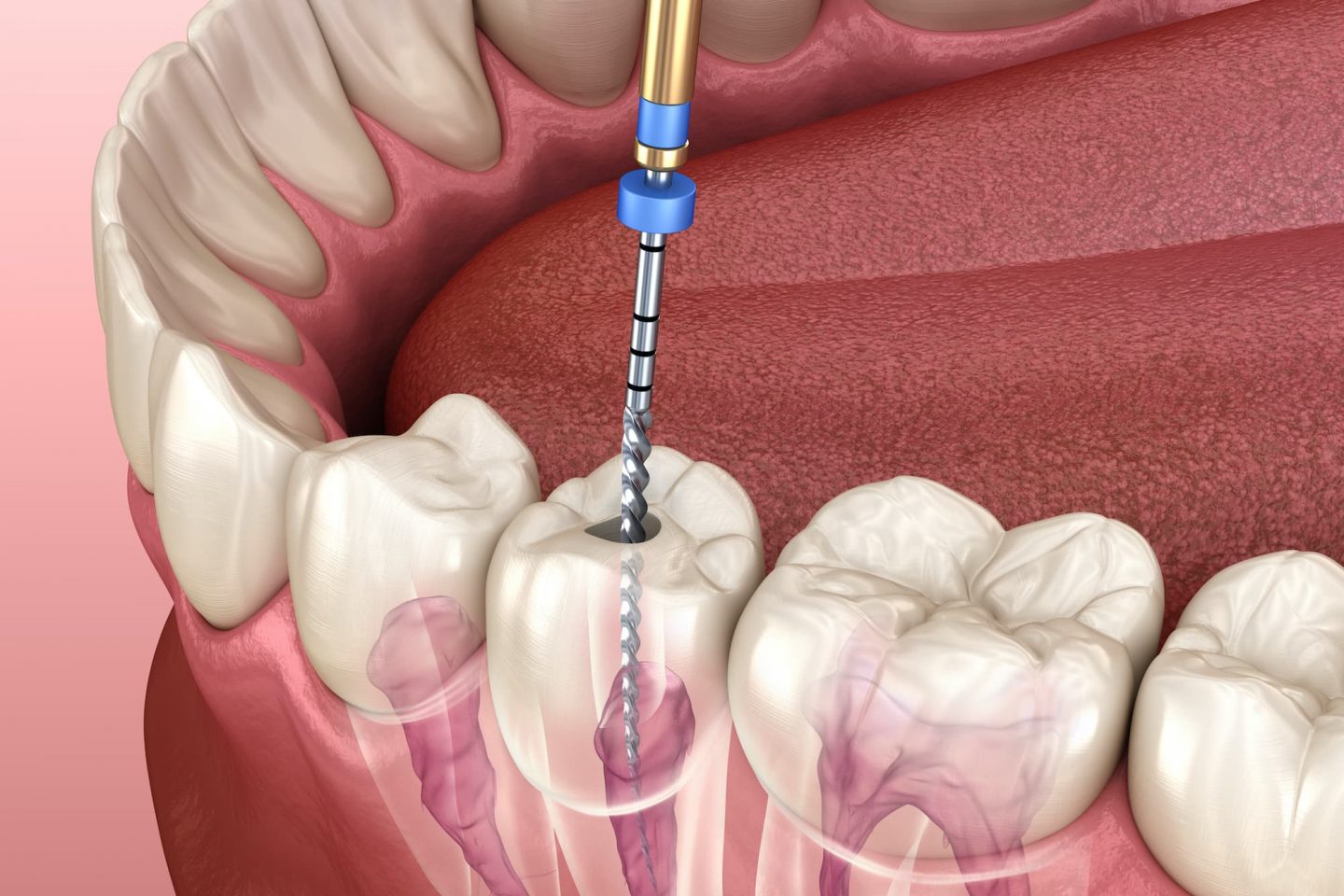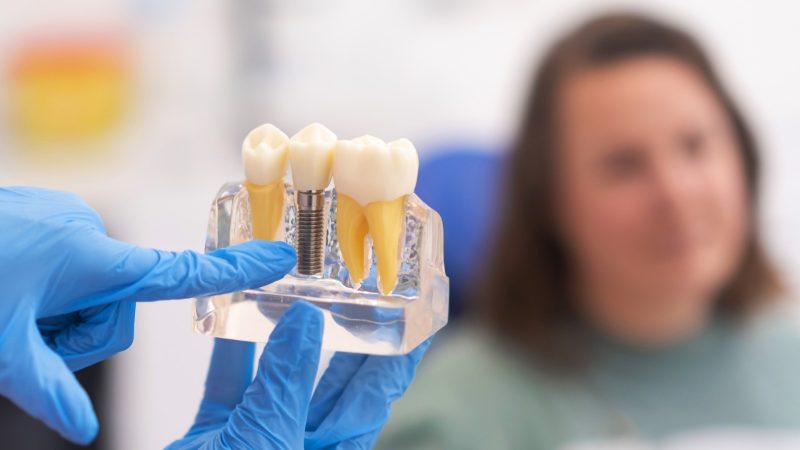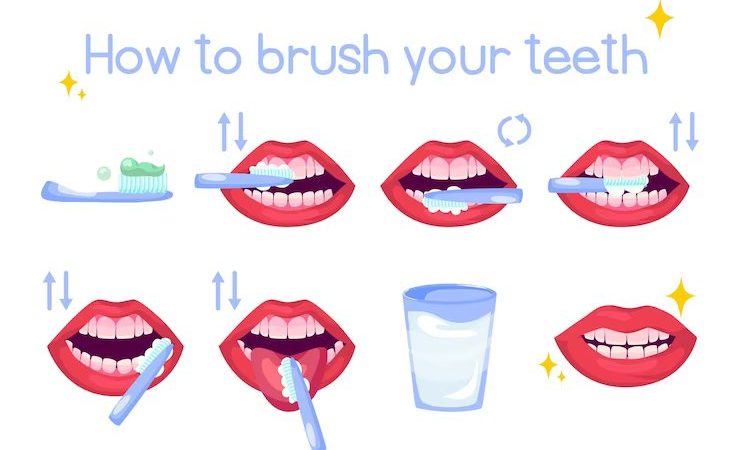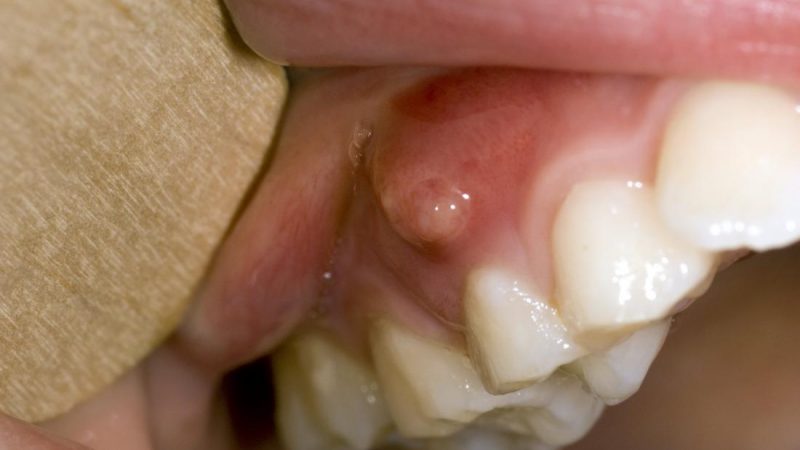Root Canal Treatment

Root canal treatment (also known as endodontic therapy, endodontic treatment or root canal therapy) is a dental procedure used to repair and save a damaged or infected tooth without removing it permanently. People undergo this procedure when the soft tissue inside the root canal that contains blood vessels, nerves and connective tissues, becomes swollen or infected. This treatment eliminates the inflammation and decontaminates the tooth from microbial infection caused due to deep decay, repeated dental procedures, and a crack or injury to the tooth.
Why does tooth pulp need to be removed?
When bacteria begin to multiply on the damaged pulp inside the pulp chamber, it causes an infection or abscess tooth (pus filled pocket at the end of the roots of the tooth). When the infection spreads in the root canal of the tooth, it may cause:
- Swelling on the face, head & neck
- Loss of bone around the tip of the root
- Drainage problem occurring through the side of tooth into the gums or through the cheek into the skin.
Signs & symptoms for root canal treatment
If a person is suffering from these signs and symptoms, s/he should consider a root canal treatment:
- Tooth sensitivity from hot & cold foods
- Pain while biting or chewing food
- Chipped or cracked tooth
- Swollen gums
- Pimples on gums
- Darkened gums or deep decay
When is root canal treated?
When the soft inner part of the tooth becomes inflamed, injured or infected, it becomes necessary to undergo root canal treatment to prevent any further damage. The best way to preserve the structure of the tooth is by removing the injured or infected pulp while the crown of the tooth remains intact.
Various reasons involved in damaging the pulp:
- Tooth decay
- Multiple dental procedures
- Chip or crack in the tooth
- Tooth injury
How is a root canal performed?
The treatment for a root canal includes removing the affected area of the tooth, cleaning and decontaminating it using disinfectants and then filling and sealing it.
The proper sequence in which the root canal treatment is carried out is as follows:
Step one:
The dentist will treat the infected tooth with a small amount of numbing medicine on the gum of the patient. After this, a local anesthesia will be injected into the gums which may cause a sharp pinch or burning sensation.
(The local anesthesia will only numb the affected area while the patient will remain awake during the whole procedure.)
Step two:
To keep the area near the affected tooth dry and free from saliva, the dentist may place a thin sheet of rubber or vinyl called a dental dam.
Step three:
This step may include drilling a small hole from behind the tooth to get an access to the pulp chamber and root canal for treatment.
Step four:
While the tooth is still numb, the dentist will remove the damaged and infected part of the tooth through a small hole drilled by using specially designed instruments. After the removal of the damaged parts, the area is cleaned out using a series of root canal files.
Step five:
After scrapping and scrubbing the infected tooth, the debris are flushed away by spraying water or sodium hypochlorite solution and the canal is disinfected by using antiseptic and antibacterial solution. The dentist may also apply a coat of some topical antibiotic to prevent reinfection.
Step six:
Once the canal is thoroughly cleaned, the dentist will fill and seal the tooth with a material called “gutta-percha”. This material will ensure that the tooth is completely sealed and will protect it from further contamination.
Step seven:
This concluding stage may involve further restoration of the tooth. A metal or inert material crown is placed over the tooth to protect it from further damage. This metal crown will prevent it from breaking and restore it to function like any other tooth.
Root canal complications
A new infection may appear after the root canal treatment if:
- The root canal is not properly cleaned
- There is an undetected crack in the root of the tooth
- Bacterial infection is passed into the inner tooth during restoration
- There is a breakdown of the inner sealing material which may allow the bacteria to reinfect the tooth.
Some complications can be easily resolved by retreatment but in other cases, you may need a surgery to save the infected tooth.
Tips to avoid this condition
Here are some steps which can help a person to avoid root canal which are as follows:
- Brush your teeth twice a day
- Floss your teeth at least once a day
- To avoid sports related injury, always wear a mouth guard
- Visit a dentist regularly for your dental checkup
Best Hospitals & Doctors for Root Canal Treatment in Ghaziabad
Dentists at Yashoda Hospital & Research Centre, Nehru Nagar, Ghaziabad are known for providing world-class health care services to patients. They are highly skilled in diagnosing, preventing and treating all dental diseases as well as performing root canal treatment with great accuracy and care. Book an appointment at Yashoda Hospital now and get the best root canal treatment in Delhi NCR & Ghaziabad.




